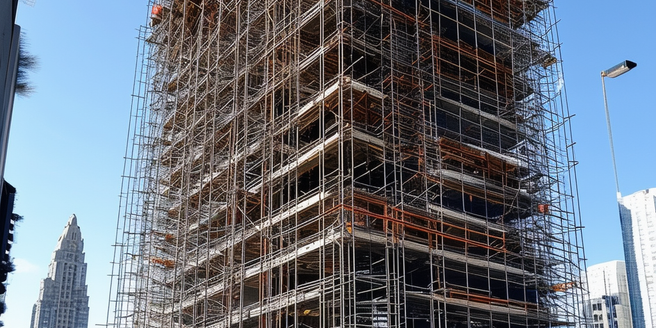
Understanding Mass Torts in the Construction Industry
Mass torts are legal actions involving multiple plaintiffs lodging allegations of injuries or damages against one or several defendants, usually based on a single act of negligence. They often occur where a large number of individuals suffer similar harm due to shared circumstances or causes. The construction industry is particularly prone to mass torts due to its high risk factors, with claims typically stemming from architectural failings, structural deficiencies, and negligent industry practices. These cases can be highly intricate, appearing nebulous to those unfamiliar with this area of law. This article aims to demystify the complex nature of mass torts in the construction sector, providing a clearer understanding of their function and their potential implications on construction entities.
Common Instances of Mass Torts in Construction
Mass torts in the construction industry, such as shoddy scaffolding, harmful material exposure, or negligent construction leading to building collapse, significantly affect the health and safety of workers, due to their complex and diversified nature. Scaffolding-related injuries can stem from various reasons, like poor assembly, non-compliance to safety standards, or usage of sub-standard materials. Workers might be exposed to hazardous substances like asbestos, lead, or mold, leading to serious long-term health problems, the complexity of which lies in determining the origin of harmful materials, assessing exposure levels, and understanding the long-term health impacts. The most catastrophic scenario is a building collapse due to negligent construction, where determining culpability, adherence to construction standards, and evaluating compensations are complex issues. Delving into each instance reveals the pervasive implications of these incidents, necessitating comprehensive solutions and systematic oversight for their prevention.
The Legal Framework Around Construction Mass Torts
Within the construction industry, mass torts are judged within tort law, pivoting around the concepts of negligence and causation. Negligence refers to carelessness or breach of duty by the defendant leading to damage, while causation indicates a link between the defendant’s actions and the resulting harm. These concepts must be convincingly proven in court, which can be challenging.
These lawsuits often take the form of class actions, where several plaintiffs with similar damages band together against a common defendant. This promotes efficiency by allowing similar claims to be heard in one court. However, the complex legal intricacies, broad scope of affected people, and the detailed investigation required make these cases difficult for the average person to navigate, necessitating expert legal consultation.
Experienced attorneys specializing in mass torts can provide professional advice, plan litigation strategies, and represent the claimants to ensure their rights are protected and they receive the due compensation. Therefore, obtaining seasoned legal counsel is of paramount importance in such complex legal situations.
Case Studies: Notable Mass Torts in the Construction Sector
One of the most infamous instances of a construction mass tort is the prolonged litigation over asbestos exposure, which significantly affected thousands of workers. Asbestos, recognized for its resistance to heat, electricity, and chemical damage, was extensively used in construction materials, resulting in widespread exposure. The widespread usage of asbestos led to an increase in health issues such as mesothelioma among workers, signaling the severe nature of mass torts in the construction industry.
Other cases of construction mass torts involve the collapse of the Savar Building in Bangladesh in 2013, and the bridge at Florida International University in 2018. These incidents, causing considerable loss of lives and injuries, started important debates on accountability, risk management, and safety in construction.
Overall, these examples highlight the nature, societal impact, and legal implications of mass torts, demonstrating the significant risks and the need for better safety regulations. Therefore, they emphasize the urgent need to elevate industry standards to prevent future mass torts in construction.
Precautions and Measures to Prevent Mass Torts
Proactive measures like rigorous safety protocols, regular equipment maintenance, and periodic site inspections in high-risk industries like construction reduce chances of situations leading to mass torts. Investing in employee training also helps to prevent legal complications by improving safety procedures. Furthermore, securing the right insurance coverage provides financial protection against mass torts, covering defense costs in such lawsuits. Diligent record-keeping, showcasing compliance with safety standards, serves as crucial evidence should a mass tort arise. Therefore, proactive action, employee training, adequate insurance, and meticulous record-keeping are strategic measures that can spare a company from costly lawsuits while fostering a safe working environment.
